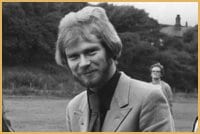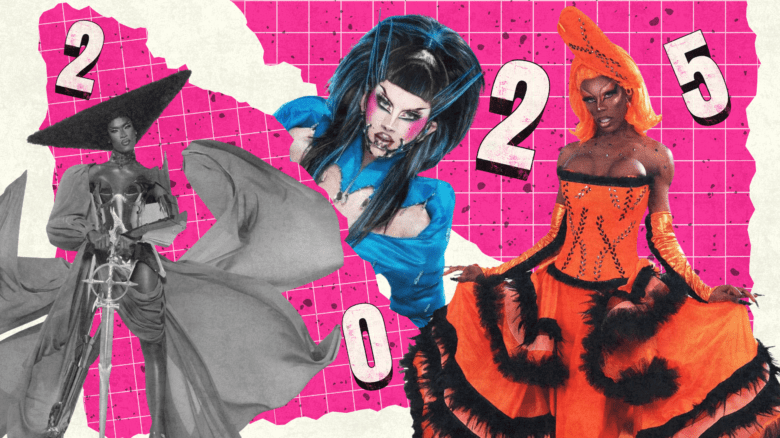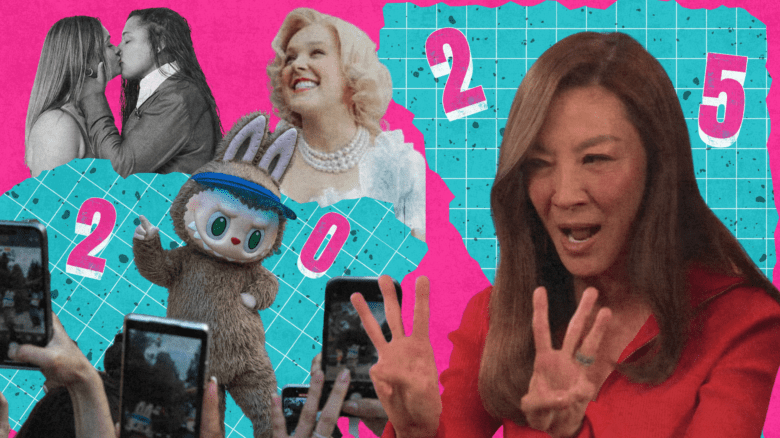Even the most casual of music fans has heard (and can probably hum you a tune or two) of Rod Stewart, Elton John, Led Zeppelin and Eric Clapton. Not to mention the two biggest British groups of the early rock era, The Beatles and The Rolling Stones.
But how about their friend and countryman Long John Baldry, a 6’7″ giant of a man, consumed by the blues, who mentored many of them and paved the way for the British blues explosion of the early ’60s?
Mostly he is a footnote in the history of music now, more famous for who he knew and who played in his bands than what he himself accomplished.
Baldry’s death — in his adopted hometown of Vancouver in 2005 — has, however, sparked renewed interest in his musical contributions as the unlikely link from early black American blues to British rock.
Born John William Baldry during the London Blitz of World War II, he was a gay man at a time when it was still illegal to be gay in Britain.
He sang in the macho genre of the blues, discovering and playing in bands with the likes of Stewart and John. He went to school with Stones drummer Charlie Watts (where as kids they started a Jazz & Blues Appreciation Society), showed Eric Clapton that a pale British boy could sing the blues, and even scored a British number one hit in 1967 with “Let the Heartaches Begin” — an ill-advised commercial pop number that alienated his core fans but brought him a short-lived fame complete with appearances on the TV program Top of the Pops, screaming teenagers and swooning housewives.
Little did they know that Baldry, the object of their affections, was gay. It was never spoken about in public, of course, but Baldry lived about as openly as you could in the 1960s. He had style (he loved outlandish clothes), a voracious appetite for drink and fun, and discretely carried on his homosexual dalliances.
Two recent projects, begun separately but which inevitably became almost companion pieces, shed a fascinating light on Baldry and take a step in claiming for him his rightful place in the history of British music.
Nick Orchard began work on his documentary Long John Baldry: In the Shadow of the Blues in 2000, following Baldry with camera and crew to his old stomping grounds in London where Baldry had gone to do some recording work. They visited his old school, the church where he sang in a choir and the very spot on a downtown street where he was arrested for busking more than 40 years earlier.
The Vancouver filmmaker says he found Baldry “very approachable, very warm and friendly… terribly personable.”
In his interviews with people like Rod Stewart, Elton John and Paul McCartney’s brother Mike, Orchard discovered a man greatly loved but with flaws that plagued his personal life and career. Baldry was more trusting than he should have been and relied on business managers who ripped him off, says Orchard. He was loyal to a fault, and put his faith in some questionable people.
Author Paul Myers never met Baldry but spent more than two years researching and writing his biography It Ain’t Easy: Long John Baldry and the Birth of the British Blues. When he started, he knew very little about his subject, but as a songwriter and musician was a fan of all the musical progeny from that era. Myers jumped at the chance to write about Baldry after making some cursory investigations.
“I was impressed with the idea that a 6’7″ English gay man was the lynchpin of the British Blues,” Myers recalls from his home in Berkeley, California.
Myers was also captivated by the story of how, early in Elton John’s solo career, Baldry convinced his former piano player to break off his engagement with one Linda Woodrow after a night of drunken debauchery.
John recalls that turning point of his life in the book: “John [Baldry] said to me, ‘Why are you getting married to this woman? You’re more in love with Bernie [Taupin, Elton John’s songwriting partner].”
That incident inspired John’s very moving “Someone Saved My Life Tonight.”
Part of Myers’ research for the book involved hooking up with Orchard and pouring over his several hours of interview footage of Baldry.
“It was like having the ghost of John Baldry tell me his life story,” Myers remembers. Due to financers who had backed out and other delays, Orchard had still not completed his documentary in 2005; meeting up with Myers was a catalyst to finish it. Indeed, Orchard and Myers ended up working quite closely together, sharing interviews, contacts and information. Myers was even interviewed and filmed for the documentary and ended up writing the narration.
Although it is not discussed in great detail in Orchard’s documentary, Myers clearly suggests in his book that Baldry’s sexuality couldn’t help but come into play, affecting both his career and his personal life.
Myers feels there was a natural reigning in of Baldry’s full truth which probably made it hard to keep up appearances and probably burned him out a bit.
Baldry’s big hit, “Let the Heartaches Begin,” thrust him into the spotlight, earning him (for a short while) great sums of cash. He was leading a very hedonistic life at this time, including attending elaborate parties at the home of Oliver composer Lionel Bart, who shared his interest in young guys.
In Myers’ book, Baldry’s sister Margaret does not go into detail, but does reveal that “some of them were very young. John was blackmailed on a couple of occasions. I used to meet a lot of these young guys who were way beyond their years, and they were clearly out to get his money.”
As the ’70s dawned, Baldry returned to his roots and, in 1971, recorded It Ain’t Easy, an impressive, rocking album co-produced by his friends Stewart and John. Both had already achieved greater fame than Baldry and soon would be flying to sell-out concerts around the world in private jets. The labour of love was their way of paying Baldry back for giving them their first jobs.
It Ain’t Easy was one of Baldry’s biggest successes and his introduction to the US and Canadian markets. The opener, “Don’t Try to Lay No Boogie Woogie on the King of Rock ‘n’ Roll” was inspired by his arrest for busking all those years ago and became a big hit.
Shortly after, needing a fresh start (some of the British never forgave him for Heartaches), Baldry moved to New York. It seemed to free him. Dressed in leather, out on the town, he met the man he would spend the rest of his life with: Felix “Oz” Rexach, a charming, chatty, flamboyant Puerto Rican immigrant who frequented Studio 54 in spandex from the clothing shop where he worked, taking orders from the well-heeled partiers.
From New York, the couple moved to a farmhouse in Milton, outside of Toronto. During this time, he recorded another of his best records, Baldry’s Out! Whether the title referred to his release from a psychiatric hospital (years earlier, despondent over a breakup, he’d taken an overdose of Valium and alcohol) or to his sexuality, the album included one of the most significant and satisfying songs of his career.
“A Thrill’s a Thrill” was an oddity when it appeared in 1979. Written by a transsexual, Barbra Amesbury (who had a Canadian top 10 hit as Bill Amesbury), it captured perfectly the heady days of post-Stonewall New York City. EMI Canada was nervous about releasing a song with the lyrics: “The gays are straight/and the straights are queer/and the bi’s just call everybody dear.”
And the delicious couplet “Leather whips and fingertips/I know a boy who is growing tits.” The lyrics were cleaned up for the single version.
Myers jokes that Baldry’s “large frame slipped on the ice one too many times,” so he moved with Rexach to Vancouver around the time of Expo ’86. Like many, Baldry was drawn to the temperate weather and the feeling that the West Coast was the New Frontier.
After his lover’s death, Rexach carried his ashes in the 2005 Vancouver Pride Parade. “I’m not sure if he actually would have approved,” Myers muses.
While not ashamed of who he was, Baldry certainly wasn’t a gay rights crusader. But Rexach seems to feel he would have loved it, Myers says.
“I think he was comfortable with who he was. He had a pretty good life,” Orchard says.
Baldry lived for his music. He also loved to make people laugh. Playing at the Wintrop Blues Festival in Washington State late in his career, he appeared after Koko Taylor who had been introduced as the “Queen of the Blues.”
Onstage, after a few cocktails, during the introduction of a song, Baldry suddenly shouted out: “Koko Taylor, Queen of the Blues? I thought I was Queen of the Blues!”

 Why you can trust Xtra
Why you can trust Xtra


